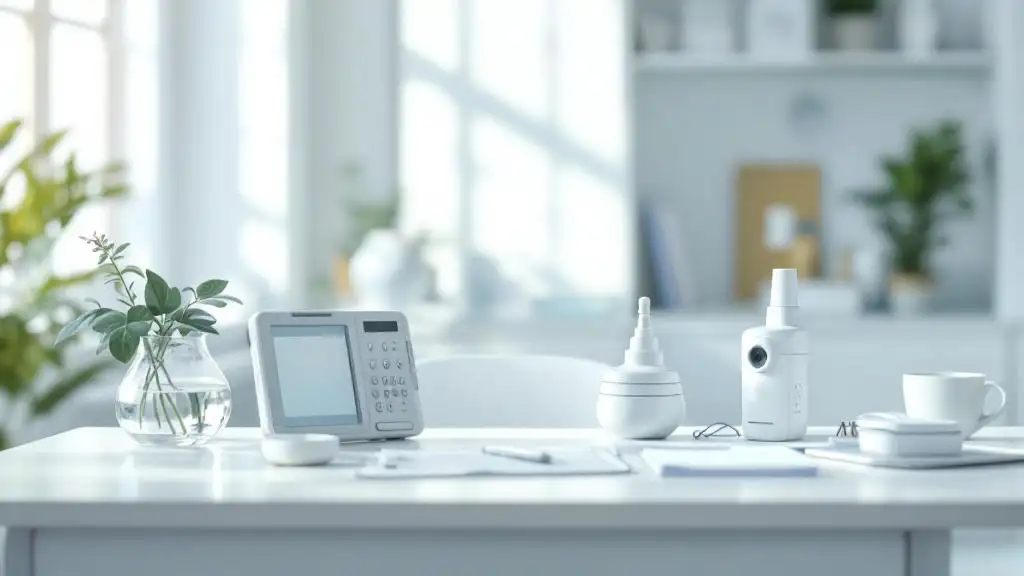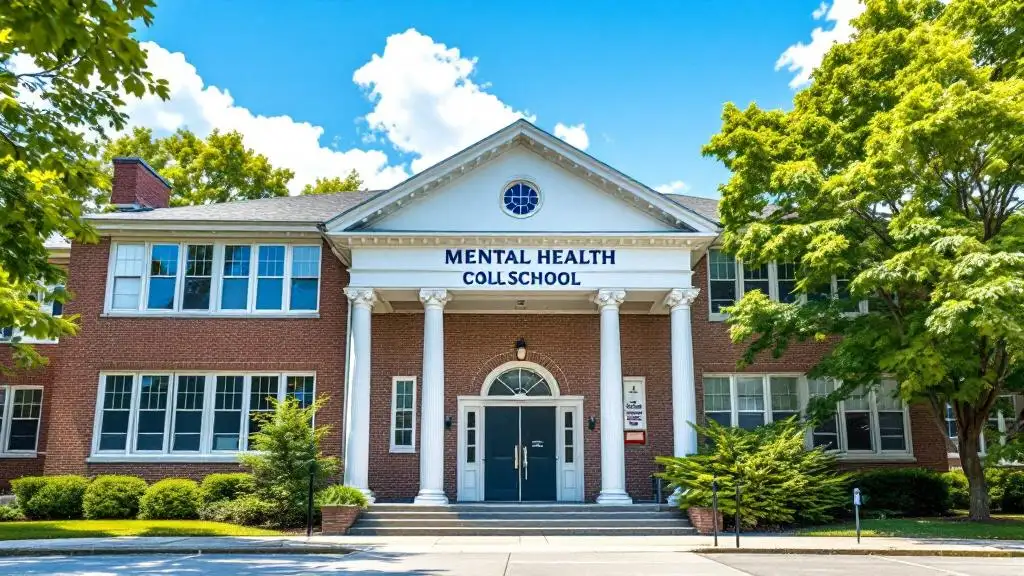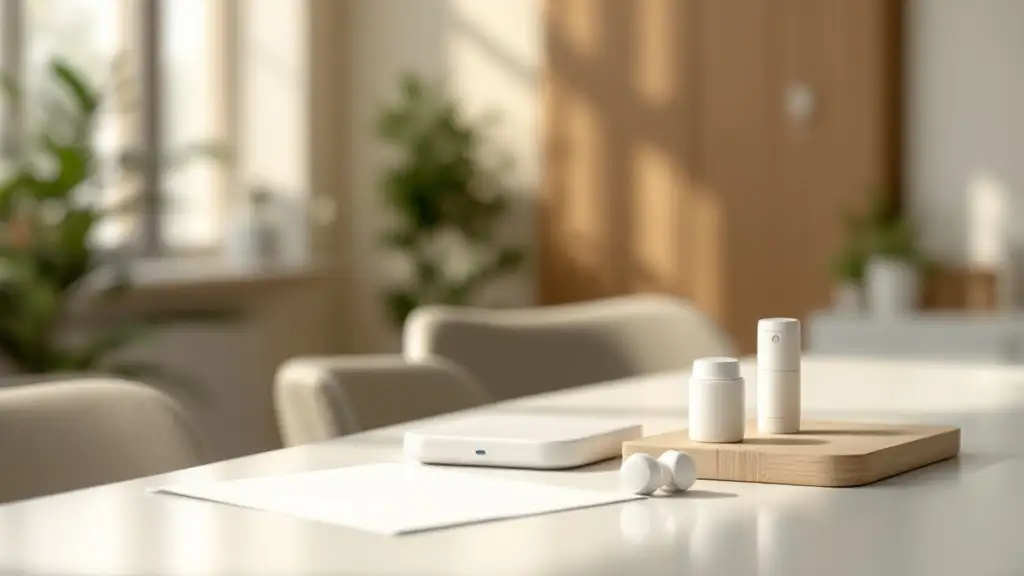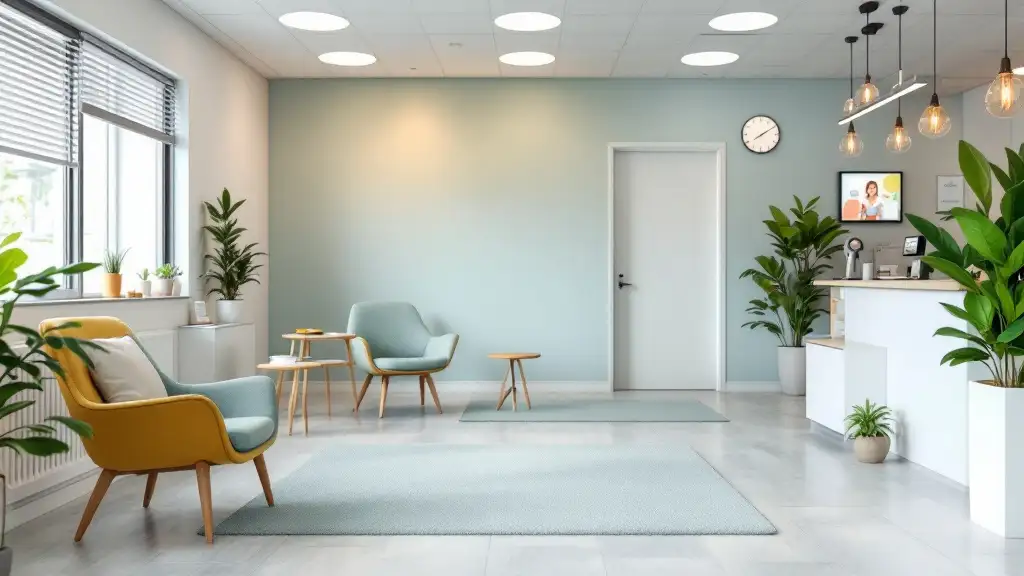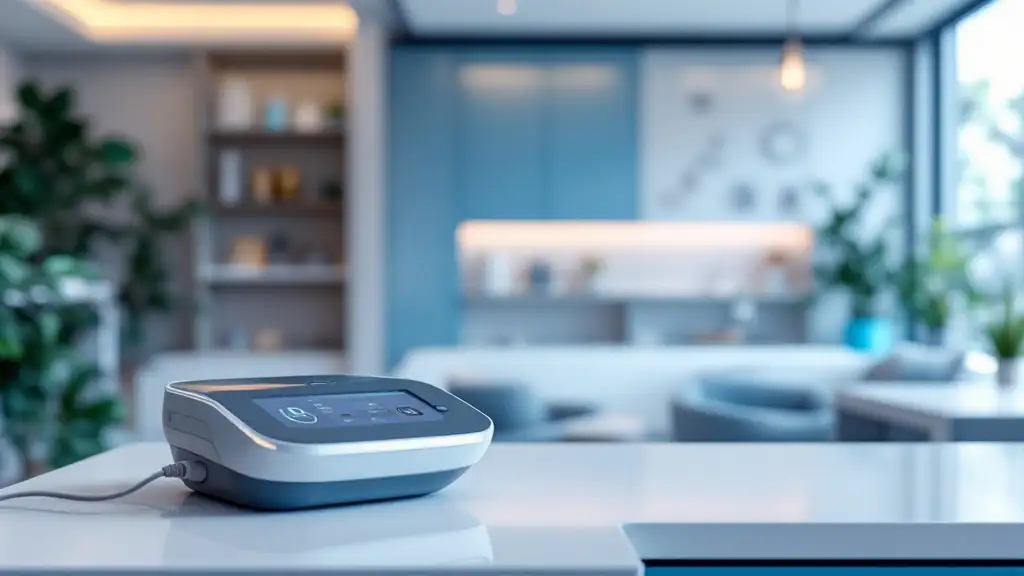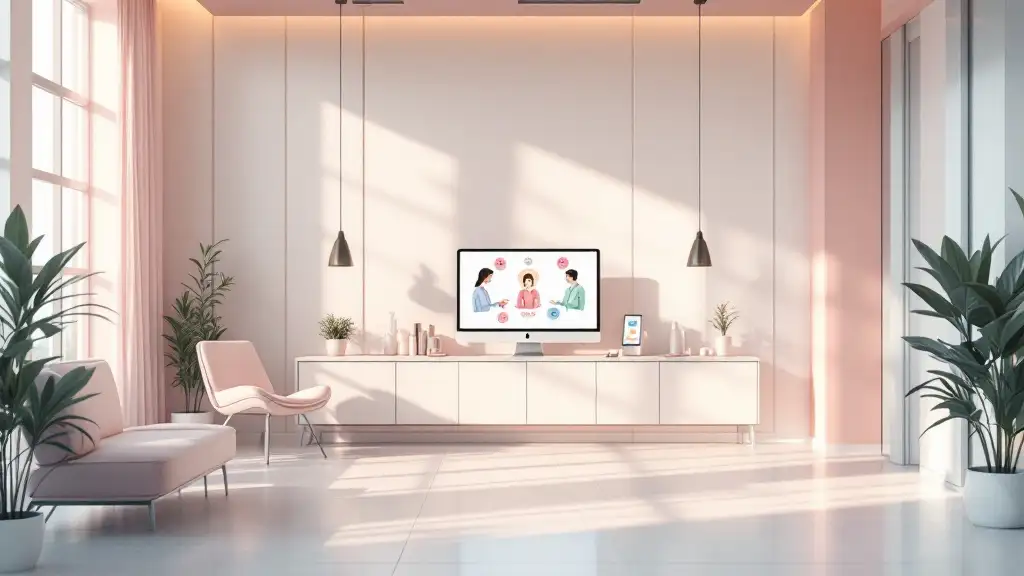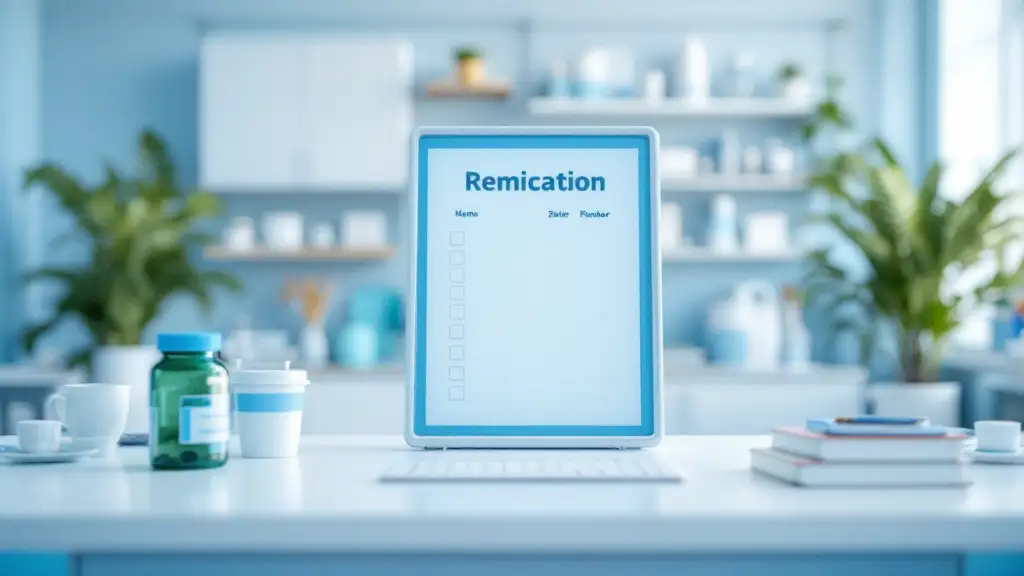A New Era in Teen Mental Health Care
As social anxiety increasingly affects teenagers worldwide, mental health services are evolving to provide effective treatment remotely. Recognizing social anxiety symptoms early and delivering tailored interventions through telehealth platforms offers promising solutions to overcome access barriers and enhance mental health outcomes for young people.
Understanding Comprehensive Mental Health Services
What are comprehensive mental health services?
Comprehensive mental health services refer to a wide range of treatments and support systems designed to promote mental well-being and address various mental health conditions throughout life. These services go beyond traditional therapy by including medication management, crisis intervention, community-based care, and long-term support tailored to individual needs.
Components and scope of services
These services incorporate evidence-based therapies such as cognitive-behavioral therapy (CBT), medication, and telehealth options like telemental health, which increase accessibility, especially in remote or underserved areas. They also include prevention programs, early intervention strategies, and ongoing monitoring to ensure effective outcomes. Additionally, crisis response, peer support, and family involvement are important components.
Integration of mental health into wider sectors
A critical feature of comprehensive mental health care is its multisectoral approach. It involves embedding mental health services into health care settings like primary care and schools, while collaborating with social services, education, justice systems, and community organizations. This integration addresses underlying social determinants such as poverty, violence, and inequality, improving overall mental health outcomes. Emphasizing culturally sensitive practices and trauma-informed care ensures services meet diverse population needs effectively.
Key Treatments for Anxiety and Depression in Youth
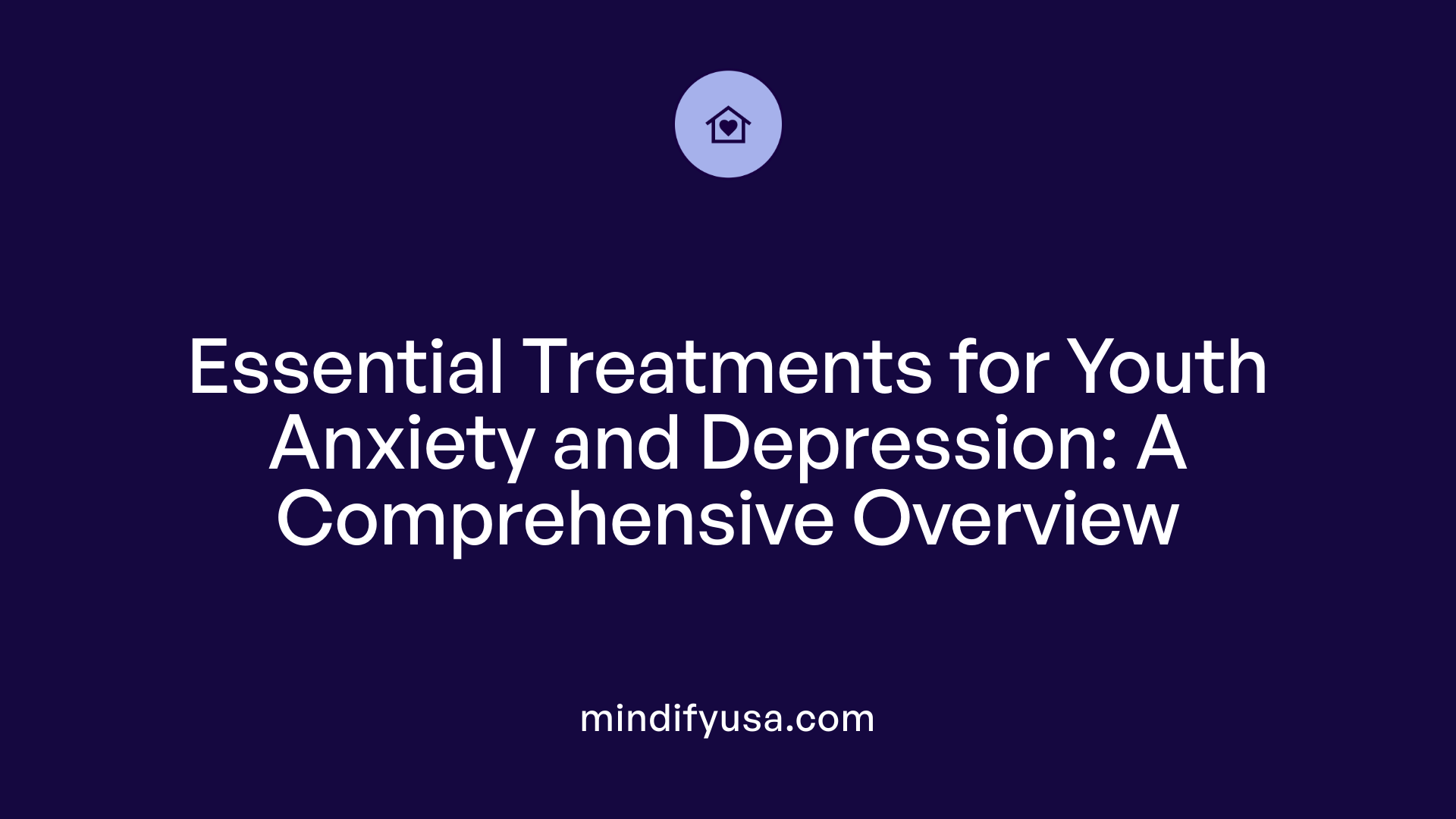
How are anxiety and depression treated in mental health services?
Anxiety and depression in young people are usually addressed through multiple strategies that ensure comprehensive care. Psychotherapy forms the cornerstone of treatment, with Cognitive-Behavioral Therapy (CBT) being one of the most effective approaches. CBT focuses on altering negative thought patterns and behaviors, adapted to the individual's developmental stage.
Recently, telemental health (TMH) has become a feasible and well-accepted alternative to in-person therapy. TMH interventions often include computer-assisted CBT, telepsychiatry, and videoconferencing, which help overcome barriers like distance and resource limitations. Studies confirm that remote CBT and family-based therapies delivered via videoconference or self-guided modules significantly reduce symptoms of anxiety, depression, and obsessive-compulsive disorder (OCD), often maintaining benefits over months.
Medication management is another common component, especially for moderate to severe cases. Antidepressants such as selective serotonin reuptake inhibitors (SSRIs) and serotonin-norepinephrine reuptake inhibitors (SNRIs) are frequently prescribed. Primary care providers and psychiatrists tailor these medications to symptom severity, side effects, and adherence considerations.
Lifestyle and support measures play an essential role alongside therapy and medication. Encouraging regular physical activity, practicing stress-reduction techniques, and ensuring proper sleep hygiene can improve outcomes and symptom control. Additionally, family involvement, educational support, and peer or group support enhance engagement and adherence to treatment.
In summary, effective treatment of anxiety and depression in youth integrates psychotherapy—delivered in-person or remotely—with medication when appropriate, bolstered by supportive lifestyle changes and coordinated care from mental health professionals.
The Promise of Telemental Health for Youth Anxiety
What Are the Benefits of Telemental Health (TMH)?
Telemental health (TMH) offers an effective alternative to traditional in-person mental health services for young people. It has been shown to successfully reduce symptoms of anxiety, depression, and obsessive-compulsive disorder among adolescents. Various remote therapies, including computer-assisted cognitive-behavioral therapy (CBT), have produced outcomes comparable to face-to-face treatment, enhancing the accessibility and effectiveness of mental health care.
How Does TMH Overcome Barriers Like Geography and Logistics?
TMH breaks down geographical and logistical barriers that often prevent youth from accessing mental health care. This is especially important for those living in remote or underserved areas. Through videoconferencing, telepsychiatry, and digital tools such as apps and chatbots, TMH allows young people to receive timely support without the need to travel long distances or face scheduling conflicts.
What Makes Remote Therapy Modalities Feasible for Youth?
Remote therapy employs both synchronous (real-time videoconferencing) and asynchronous (email, apps) approaches, making it highly adaptable to young patients' needs and schedules. Programs like online CBT and family-based interventions delivered remotely are well-received, with high satisfaction reported by both adolescents and their parents. These modalities improve engagement and adherence by aligning with the developmental stage and preferences of youth, offering convenience and personalized care.
Overall, TMH not only enhances access to treatment but also maintains treatment quality and patient satisfaction, making it a promising approach to addressing youth anxiety effectively.
Remote Modalities for Social Anxiety Treatment in Teens
What are the main synchronous modalities used for treating social anxiety in adolescents?
Synchronous telepsychiatry and telepsychotherapy are widely employed for adolescents with social anxiety. These involve real-time videoconferencing sessions between clinicians and youths, allowing therapist-guided cognitive therapies online. For example, the CT@TeenSAD program delivered 10 structured therapy sessions via videoconference focusing on cognitive modeling and behavioral experiments. Such synchronous interactions provide direct feedback, collaborative problem-solving, and ongoing monitoring, which have shown significant reductions in social anxiety symptoms. Both therapists and adolescents have reported improvements throughout the treatment, highlighting the feasibility and preliminary efficacy of this modality.
How do asynchronous interventions support teens with social anxiety?
Asynchronous tools complement real-time therapy by offering flexibility and ongoing support without the need to schedule sessions. These include apps, chatbots, email exchanges, and self-guided modules. For instance, online programs based on cognitive behavioral therapy can be accessed at any time, allowing adolescents to engage with exercises targeting automatic negative thoughts and avoidance behaviors at their own pace. Although they lack immediate therapist interaction, these tools can be highly tailored and accessible, often promoting engagement and consistent use, particularly when designed with input from youths and families.
What role do hybrid and tailored treatment models play?
Hybrid models combine elements of synchronous and asynchronous approaches, maximizing benefits of both. Treatment plans can be customized to individual developmental needs, preferences, and severity levels. For example, some adolescents participate in live videoconference sessions complemented with app-based homework or interactive modules addressing social fears and safety behaviors. Tailored interventions ensure a personalized therapeutic experience, cultivate adherence, and accommodate varied schedules or resource availability. This flexibility is especially valuable in remote or underserved areas, enhancing access to evidence-based care while maintaining therapist engagement and monitoring.
These remote modalities collectively offer diverse, effective avenues to support adolescents with social anxiety, helping to overcome geographical and logistical barriers while maintaining quality care standards.
Efficacy of Computer-Assisted Cognitive-Behavioral Therapy (CBT) Remotely
Evidence supporting computer-assisted CBT effectiveness
Computer-assisted cognitive-behavioral therapy (CBT) delivered through remote modalities like videoconferencing and self-guided online programs has been shown effective in treating various youth mental health conditions. Studies indicate significant symptom reduction for anxiety, depression, and obsessive-compulsive disorder (OCD) in children and adolescents. Programs such as online CBT, internet-based CBT, and family-based CBT have demonstrated lasting benefits, with symptom improvements maintained during follow-up periods.
Comparison with face-to-face therapy outcomes
Remote CBT interventions yield outcomes comparable to traditional in-person therapy. For example, telepsychiatry and telepsychotherapy methods mirror the effectiveness of face-to-face sessions in reducing symptoms of social anxiety and depression. Both adolescents and therapists report significant benefits, underscoring remote approaches as viable alternatives, especially where geographic or logistical barriers limit access to in-office treatment.
Application in social anxiety, depression, and OCD
Guided online CBT programs targeting social anxiety, such as SOPHIE and CT@TeenSAD, focus on core mechanisms like negative thoughts, avoidance, and safety behaviors. Though immediate post-intervention effects on social anxiety may sometimes appear slight, follow-ups show meaningful reductions and improvements in social functioning and quality of life. Similarly, remote CBT has proven effective for reducing depression and OCD symptom severity, making it a promising tool for diverse youth mental health needs.
Online CBT Programs and Family-Based Approaches via Videoconferencing

Structure and Delivery of Online CBT Programs
Online cognitive-behavioral therapy (CBT) for youth typically utilizes videoconferencing platforms to facilitate real-time, direct interaction between therapists and adolescents. These interventions often include structured modules covering cognitive restructuring, exposure exercises, and behavioral experiments tailored to address specific disorders like anxiety and OCD. Programs may be delivered in fully guided formats or use hybrid models combining synchronous sessions with self-guided online materials.
Role of Family Involvement
Family-based CBT interventions are increasingly integrated within these online platforms, recognizing the critical role parents play in supporting adolescent mental health. These programs engage both adolescents and their families in therapy sessions to enhance communication, reinforce coping strategies, and foster a supportive home environment. Family involvement has been shown to improve treatment adherence and amplify symptom reduction outcomes.
Symptom Reduction and Maintenance Over Time
Research evaluating these online CBT and family-based programs consistently reports significant reductions in symptom severity for disorders such as anxiety, depression, and OCD. Notably, the benefits achieved post-intervention have been maintained during follow-up periods, underscoring the lasting impact of these approaches. Adolescents report meaningful improvements in social functioning, emotional regulation, and quality of life, highlighting the tangible benefits of sustained engagement with online CBT delivered via videoconferencing.
User Satisfaction and Engagement in Remote Mental Health Care
Adolescents’ and parents’ perspectives
Both adolescents receiving remote mental health care and their parents have reported high levels of satisfaction with telemental health (TMH) services. This positive feedback highlights the acceptance and practicality of remote treatment options, indicating that TMH is well-received among youth populations. Such satisfaction is crucial in ensuring ongoing participation and comfort with digital therapeutic modalities.
Factors influencing adherence
Engagement and adherence to TMH interventions tend to increase when programs are designed thoughtfully with the users' preferences and developmental needs in mind. Factors like ease of access, personalized intervention methods, and incorporating familiar technologies (e.g., apps, videoconferencing) contribute to higher commitment from youth. Furthermore, synchronous sessions supported by trained clinicians help establish therapeutic alliance remotely, enhancing adherence.
Designing TMH with user preferences
Tailoring TMH programs to suit individual youth’s needs involves offering flexible modalities such as real-time videoconferencing, asynchronous communication tools, and hybrid models. Interventions that combine self-guided modules with clinician support, such as family-based CBT or online cognitive-behavioral therapy, respond better to user preferences and developmental stages. This user-centered approach encourages sustained engagement and improved treatment outcomes in adolescent mental health care.
Clinician Training and Competencies for Effective TMH Delivery
Necessary technical skills
Clinicians providing telemental health (TMH) services must develop strong technical abilities to navigate platforms such as videoconferencing and telepsychiatry tools effectively. This includes proficiency in setting up, troubleshooting, and ensuring secure connections to facilitate smooth, uninterrupted sessions. Understanding the digital interfaces and managing synchronous and asynchronous communication modalities are crucial for optimal service delivery.
Therapeutic alliance over remote platforms
Establishing a strong therapeutic alliance remotely requires clinicians to adapt their communication styles to virtual settings. They need to be skilled at reading verbal and non-verbal cues through video and maintaining engagement despite physical distance. Techniques to build rapport and ensure client comfort are essential, particularly for youth populations who may be less familiar with telehealth environments.
Confidentiality, ethics, and emergency planning
Ensuring confidentiality in virtual sessions demands knowledge of secure data transmission and privacy regulations tailored to TMH. Ethical considerations encompass informed consent specific to remote care and managing boundaries within digital contexts. Additionally, clinicians should have clear emergency protocols, including steps for crisis intervention and referral when clients are in distress during or between remote sessions.
Professional organizations like the American Academy of Child and Adolescent Psychiatry emphasize integrating TMH competencies into clinician training. This comprehensive approach enhances the quality and safety of mental health care delivered to adolescents via telemental platforms.
Challenges and Limitations in Implementing TMH for Teens
What are the challenges related to intervention heterogeneity in TMH?
One significant challenge in implementing telemental health (TMH) for adolescents is the considerable variability in intervention methodologies. Different programs use a range of delivery modes, such as synchronous videoconferencing, asynchronous apps, or hybrid approaches. This variability can make it difficult to compare outcomes across studies and to identify the most effective treatments for specific conditions like social anxiety or OCD.
Why is there a need for standardized protocols in adolescent TMH?
Currently, there is a lack of standardized protocols and training programs designed specifically for youth telepsychiatry. This gap poses challenges for ensuring consistent quality and safety in TMH services. Professional organizations have stressed the importance of clinician training on unique aspects of remote care, including technical proficiency, ethical considerations, confidentiality, and emergency planning. Standardized guidelines are needed to support clinicians in delivering effective and safe TMH interventions adapted to the developmental needs of adolescents.
What gaps exist in long-term research on TMH for youth?
Although many studies demonstrate immediate effectiveness of TMH interventions, such as online cognitive-behavioral therapies, there is limited evidence on long-term outcomes and sustainability of treatment effects. Follow-up periods in research are often short or inconsistent, making it difficult to assess whether the benefits endure over time. More rigorous, long-term studies are necessary to understand the lasting impact of TMH and optimize its use for preventing and treating adolescent mental health disorders.
These challenges highlight the importance of continued research, development of standardized frameworks, and specialized training to enhance the feasibility and efficacy of TMH for youth mental health care.
Professional Guidelines for Safe and Effective Youth TMH Practice
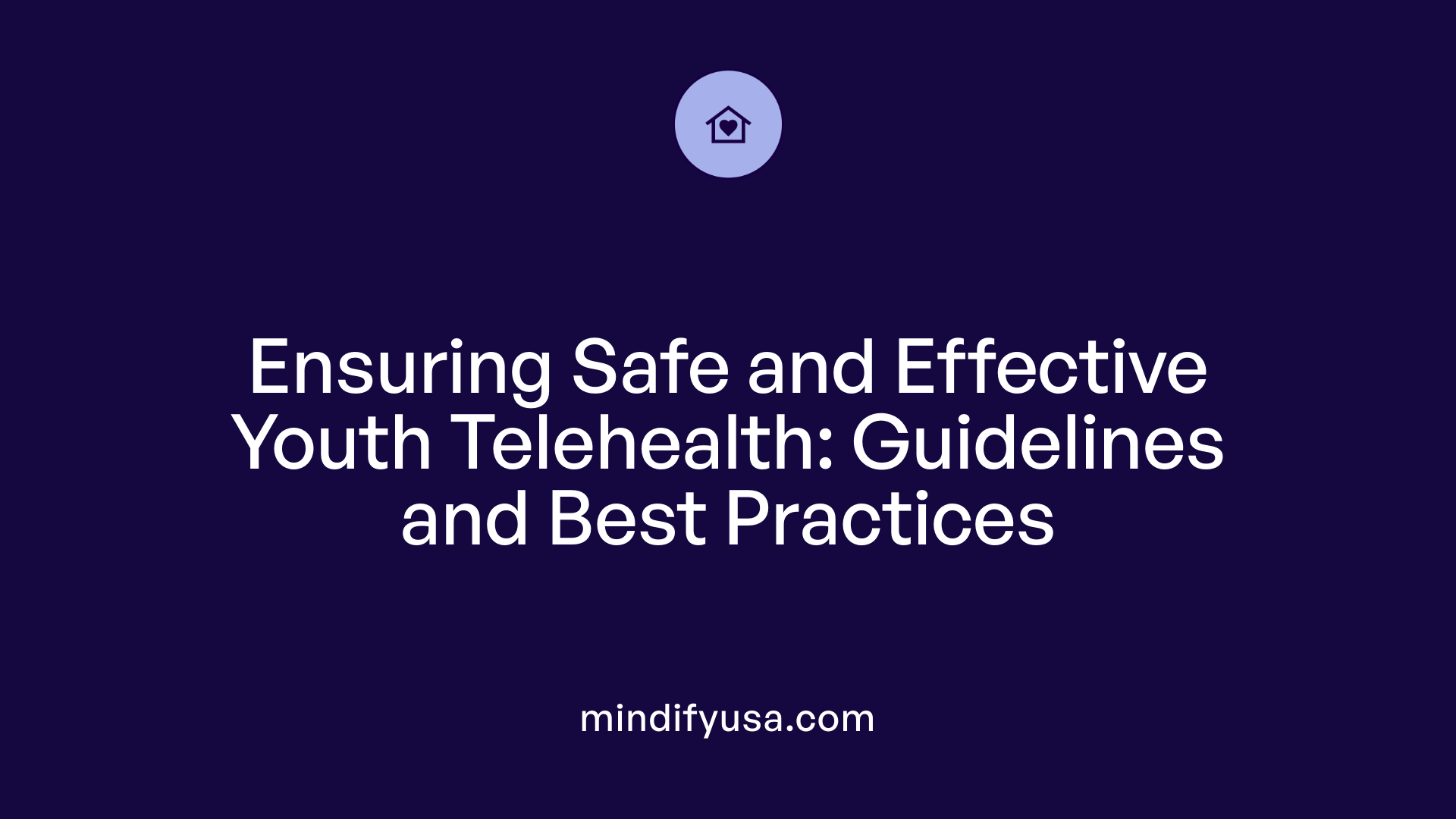
Role of American Academy of Child and Adolescent Psychiatry
The American Academy of Child and Adolescent Psychiatry (AACAP) plays a pivotal role in shaping the standards for telemental health (TMH) services targeting young populations. It develops comprehensive guidelines that help clinicians navigate the unique aspects of remote mental health care for children and adolescents. These guidelines emphasize the importance of clinician competency in technology, assessment, therapeutic alliance, confidentiality, and ethical challenges inherent in TMH.
American Telepsychiatry Association Toolkits
Complementing AACAP's efforts, the American Telepsychiatry Association (ATA) offers toolkits designed to support practitioners in delivering safe and effective TMH. These resources provide practical frameworks for conducting telepsychiatry sessions, including technical setup, patient engagement strategies, risk management, and emergency planning.
Frameworks to Ensure Quality and Safety
Together, these organizations underscore several core components critical for quality youth TMH practice:
- Clinician Training: Specialized training programs to boost proficiency in telehealth technologies and remote clinical skills.
- Confidentiality and Ethics: Adherence to privacy laws and ethical guidelines tailored for digital interactions.
- Emergency Preparedness: Protocols for managing crises remotely including access to local emergency services.
- Adaptation to Developmental Needs: Tailoring interventions to the age and cognitive level of youth.
- Ongoing Evaluation: Continual assessment of intervention efficacy and patient satisfaction.
By following these established guidelines and toolkits, mental health providers can enhance the accessibility, acceptability, and efficacy of TMH services for adolescents, ensuring these interventions are both safe and effective.
The SOPHIE Online Intervention: Targeting Social Anxiety Mechanisms
Cognitive Model of Social Phobia Basis
The SOPHIE online intervention is grounded in the Cognitive Model of Social Phobia, which highlights how individuals with social anxiety often experience heightened self-focused attention, persistent negative automatic thoughts, avoidance behaviors, and use of safety behaviors that maintain their fear.
Intervention Targets: Self-Focus, Negative Thoughts, Avoidance
SOPHIE specifically aims to reduce these core mechanisms by helping adolescents recognize and modify their negative thought patterns, shift attention away from excessive self-focus, and encourage facing feared social situations instead of avoiding them. This approach seeks to break the cycle of anxiety and avoidance that reinforces social phobia.
Structure of the Program
The program is delivered online and designed for adolescents with social anxiety symptoms aged 11 to 17. It involves guided modules that incorporate cognitive restructuring, behavioral exercises, and exposure tasks to gradually build coping skills and reduce anxiety. The remote format allows for accessibility and flexibility, making it suitable for diverse youth populations.
By focusing on these cognitive and behavioral components remotely, SOPHIE offers a promising avenue for early intervention in social anxiety among adolescents, with reported benefits in symptom reduction and social functioning.
Evaluating SOPHIE’s Effectiveness in Adolescents 11-17 Years
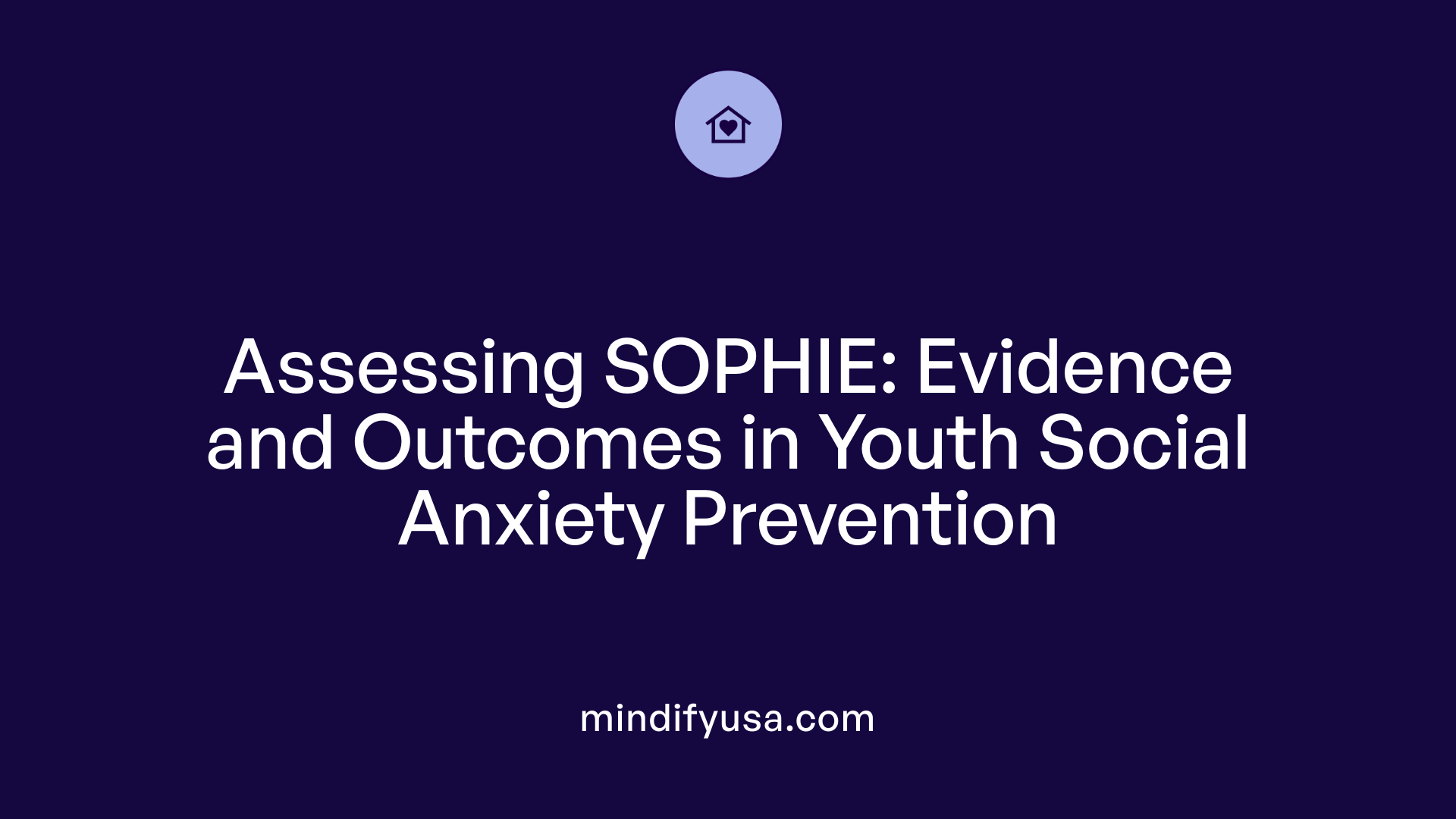
Study design and participant characteristics
The SOPHIE intervention was developed based on the Cognitive Model of Social Phobia, targeting mechanisms such as self-focused attention, negative automatic thoughts, avoidance, and safety behaviors. It was tested in a study involving adolescents aged 11 to 17 years who presented with social anxiety symptoms. The study aimed to evaluate the efficacy of SOPHIE compared to care-as-usual.
Primary and secondary outcome measures
The primary outcome was social anxiety reduction, measured using the Social Phobia Inventory (SPIN) at post-intervention. While this primary measure was not significant immediately after the intervention, the study also assessed multiple secondary outcomes. These included social functioning, depression, general anxiety, social fears, avoidance behaviors, and quality of life. Most secondary outcomes showed significant improvements post-intervention.
Delayed treatment effects at follow-up
Notably, a significant reduction in social anxiety symptoms emerged at the five-month follow-up, particularly among adolescents with subclinical social anxiety. However, not all improvements in secondary outcomes were sustained at follow-up. Qualitative interviews highlighted that participants valued the intervention despite facing challenges with exposure exercises, suggesting both positive engagement and areas for enhancement. These findings support online guided interventions as promising for indicated prevention of social anxiety, emphasizing the importance of long-term follow-up to capture delayed effects.
Benefits and Challenges Experienced by SOPHIE Participants
Positive engagement with intervention
Adolescents participating in the SOPHIE program typically reported finding the intervention beneficial. Many highlighted improvements in social functioning, depression, general anxiety, avoidance behaviors, and quality of life post-intervention. This positive engagement underscores the promise of guided online cognitive-behavioral therapies for youth struggling with social anxiety.
Difficulties with exposure exercises
Despite overall approval, participants noted particular challenges with the exposure exercises embedded in the program. These activities, designed to reduce social fears by encouraging practical confrontation, were often reported as difficult to complete. This insight points to an important area for future program enhancements to better support adolescents through these demanding but crucial therapeutic components.
Participant feedback from qualitative interviews
Qualitative interviews provided valuable feedback, revealing both enthusiasm and frustration. Participants expressed appreciation for the structure and accessibility of SOPHIE but suggested additional guidance or motivational support could improve adherence to more challenging tasks. This balanced feedback highlights the importance of ongoing refinement to increase both engagement and effectiveness in remote youth mental health interventions.
SOPHIE’s Role in Indicated Prevention of Social Anxiety in Teens
How Suitable Is SOPHIE for Adolescents with Subclinical Social Anxiety?
The SOPHIE online intervention, developed based on the Cognitive Model of Social Phobia, was specifically designed for adolescents aged 11 to 17 experiencing social anxiety symptoms. Although the primary outcome—reduction in social anxiety immediately after the intervention—was not significant, a notable improvement emerged at the five-month follow-up. This delayed effect was particularly pronounced in adolescents with subclinical levels of social anxiety, indicating SOPHIE’s suitability as an indicated prevention tool for this group.
Why Is Follow-Up Important for Observing SOPHIE’s Effects?
SOPHIE’s impact highlights the importance of assessing treatment effects beyond the immediate post-intervention period. Significant improvements in social anxiety symptoms, social functioning, depression, general anxiety, social fears, avoidance, and quality of life were observed after completing the program. However, not all gains sustained consistently at follow-up, emphasizing the need for ongoing monitoring to understand long-term benefits and areas for improvement.
What Is the Potential for Wider Application of SOPHIE?
Participants reported both beneficial experiences and challenges, particularly with exposure exercises, signaling room for enhancement and adaptation. SOPHIE’s online, guided format offers promising accessibility and engagement advantages, making it a feasible approach during times when in-person care is limited, such as in remote locations or public health crises like the COVID-19 pandemic. Its model could be further expanded and tailored to varied adolescent populations to support preventive mental health care on a broader scale.
Remote Cognitive Therapy (CT@TeenSAD) for Clinical Social Anxiety Disorder
Target population and age range
Remote cognitive therapy (CT@TeenSAD) is designed specifically for adolescents diagnosed with social anxiety disorder (SAD), focusing on youths approximately 16 years old. This age group often faces unique challenges related to anxiety, making age-appropriate therapeutic interventions essential.
Treatment design and session structure
The therapy consists of 10 structured sessions delivered via videoconferencing. These sessions are organized into distinct modules that address core therapeutic components: cognitive modeling to reshape thought patterns, enhancing attention flexibility, conducting behavioral experiments to confront fears, and relapse prevention to maintain progress after therapy ends. This modular approach allows therapists and adolescents to systematically target the different facets of social anxiety.
Modalities and safety guidelines
Therapy sessions are conducted synchronously through secure videoconferencing platforms, ensuring real-time interaction between therapist and patient. Adhering to established safety and technical guidelines is critical to protect confidentiality and ensure a therapeutic environment conducive to treatment. Therapists with varying experience levels have successfully implemented CT@TeenSAD, though more experienced clinicians tend to observe greater symptom improvement. The online delivery mode also offers increased accessibility, especially important in circumstances such as pandemic-related restrictions.
CT@TeenSAD provides a promising remote treatment option for clinically significant social anxiety among adolescents, combining evidence-based cognitive therapy principles with the flexibility of telehealth.
Therapist Experience and Treatment Outcomes in CT@TeenSAD
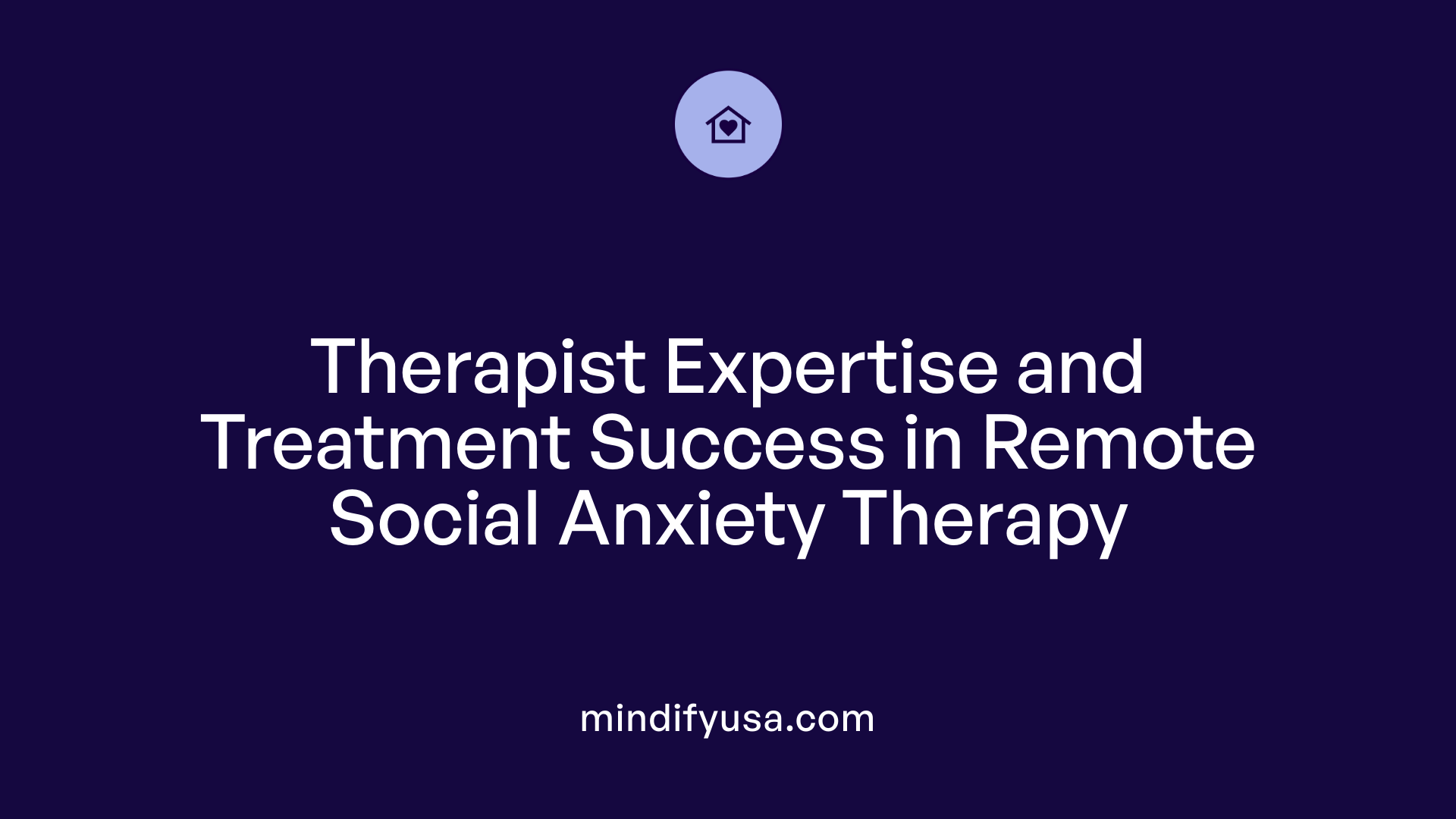
Impact of Therapist Experience Level
In the CT@TeenSAD program, therapist experience was observed to influence treatment outcomes. While all therapists facilitated improvements in adolescent social anxiety symptoms, those with more experience achieved more pronounced gains. This suggests that seasoned clinicians may be better equipped to navigate and optimize remote cognitive therapy sessions.
Observed Symptom Reductions
Both adolescent self-reports and therapist assessments indicated significant reductions in social anxiety symptoms over the ten-session videoconference course. Improvements were noted progressively, demonstrating the therapy's capacity to effectively alleviate symptoms through remote delivery.
Therapist and Adolescent Evaluations
Evaluations from both therapists and adolescents highlighted the therapy's feasibility and preliminary efficacy. Participants appreciated the structured modules focusing on cognitive modeling, attention flexibility, behavioral experiments, and relapse prevention. The remote format allowed consistent engagement, with positive feedback regarding accessibility and support throughout the treatment.
Together, these findings emphasize that while remote cognitive therapy for adolescent social anxiety is effective across various therapist experience levels, enhanced outcomes may be linked to clinicians' expertise, highlighting a potential area for targeted training and supervision in teletherapy settings.
Modular Components of Remote Social Anxiety Therapy
What are the core components of remote cognitive therapy for adolescent social anxiety?
Remote cognitive therapy for adolescents with social anxiety disorder (SAD) is structured into several distinct modules designed to target specific psychological processes. These include cognitive modeling, attention flexibility exercises, behavioral experiments, and relapse prevention strategies.
Cognitive modeling
This module involves demonstrating how thoughts and feelings influence behavior in social situations. Therapists guide adolescents through recognizing negative automatic thoughts related to social anxiety and help them to challenge and reframe these thoughts. By modeling adaptive thinking styles, therapists aim to foster awareness and restructuring of unhelpful cognitive patterns.
Attention flexibility exercises
Adolescents are taught to shift their focus away from self-focused attention, which often heightens anxiety, toward external social cues. These exercises help improve attentional control, enabling youths to better engage in social contexts without excessive internal monitoring that can trigger avoidance or distress.
Behavioral experiments and relapse prevention
Behavioral experiments encourage adolescents to test the validity of their feared outcomes by gradually confronting anxiety-provoking situations during therapy. This experiential learning promotes mastery and reduces avoidance. The relapse prevention module equips young people with coping strategies to maintain improvements and handle potential setbacks after therapy completion.
Delivered via videoconferencing, these modular approaches provide flexibility and accessibility while adhering to safety and technical protocols. Such remote therapies have shown promising efficacy, with both adolescent self-reports and therapist assessments indicating progressive reductions in social anxiety symptoms throughout the intervention sessions.
Feasibility and Preliminary Efficacy of Online Synchronous Therapy
Participant adherence and acceptability
Studies involving adolescents with social anxiety disorder (SAD) receiving online synchronous therapy report high levels of adherence and acceptability. Both adolescents and therapists reflected positively on the remote sessions delivered via videoconference, highlighting the intervention's accessibility and practical benefits. Participants particularly valued the convenience of engaging in therapy from home, which reduced common barriers such as travel and scheduling conflicts. However, challenges with specific therapeutic components, such as exposure exercises, were noted, indicating areas where support might be enhanced to improve engagement.
Symptom improvement trajectory
The treatment typically spanned around 10 sessions focusing on cognitive and behavioral strategies, including cognitive modeling, attention flexibility, behavioral experiments, and relapse prevention. A progressive reduction in social anxiety symptoms was observed through both self-reports and therapist evaluations. While initial primary outcomes might not show significant immediate post-treatment effects, follow-up assessments at several months often reveal meaningful improvements. This delayed symptom reduction was also demonstrated in related online cognitive-behavioral interventions, underscoring the importance of long-term monitoring.
Implications during the COVID-19 pandemic and beyond
The feasibility of delivering cognitive therapy remotely became particularly crucial during the COVID-19 pandemic, when in-person sessions were severely limited. Preliminary data supports the notion that synchronous online therapies offer a viable alternative for treating adolescent SAD, ensuring continuity of care amid social distancing measures. Beyond the pandemic, such remote interventions hold promise for improving access to specialized mental health services for youth in underserved or remote areas. Emphasizing training for therapists and adherence to safety protocols will be essential to maintain treatment quality and efficacy in future widespread adoption.
Importance of Tailoring Remote Interventions to Developmental Stages
Individualized Treatment Plans
Remote mental health interventions for adolescents need to consider the unique developmental needs and preferences of this age group. Tailoring treatment plans allows clinicians to address personal symptom presentations and maturity levels, making therapy more relevant and effective. For example, programs can vary the intensity and format—from one-on-one videoconferencing sessions to self-guided modules—according to individual capability and comfort with technology.
Adapting Content for Adolescent Cognitive and Emotional Development
Adolescents undergo significant cognitive and emotional changes that influence how they process information and engage in therapy. Remote interventions designed for youth often incorporate developmentally appropriate language, interactive activities, and real-life examples to match their evolving understanding and emotional regulation skills. This enhances comprehension and retention of therapeutic concepts, such as those seen in computer-assisted cognitive-behavioral therapy (CBT).
Engagement Strategies
Ensuring sustained engagement in remote therapy is challenging but vital, especially for teens who might otherwise disengage. Combining synchronous methods like videoconferencing with asynchronous tools such as apps and chatbots offers flexibility and continuous support. Additionally, incorporating elements based on adolescent feedback—such as gamification and peer support components—can boost motivation and adherence to treatment.
By customizing remote mental health interventions to the developmental stage of adolescents, clinicians can enhance the feasibility, acceptability, and ultimately the effectiveness of telemental health programs.
Role of Family and Caregiver Involvement in Remote Social Anxiety Treatment
Enhancing Support and Adherence
Family and caregiver engagement plays a crucial role in the success of remote treatments for adolescent social anxiety. In telemental health (TMH) settings, involving parents can boost treatment adherence by providing additional encouragement and helping youth follow therapeutic practices outside of sessions. High satisfaction rates among families in TMH programs reflect the perceived value of this support system in facilitating consistent participation.
Family-Based CBT Elements
Remote interventions often integrate family-based cognitive-behavioral therapy (CBT) components tailored to the adolescent's developmental stage. These elements include educating caregivers about anxiety symptoms, teaching communication strategies, and fostering collaborative problem-solving to address avoidance behaviors. Delivered via videoconferencing or self-guided modules, family-based CBT has demonstrated significant symptom reduction in youth with anxiety disorders, including social anxiety.
Addressing Family Dynamics Remotely
TMH approaches provide opportunities to address family dynamics that influence adolescent anxiety. Clinicians can observe interactions in the home environment, identify patterns contributing to social fears, and coach families in real time during remote sessions. This direct involvement helps tailor interventions to improve support systems, reduce maladaptive behaviors, and encourage healthy coping strategies. Remote delivery also overcomes barriers such as geographical distance and scheduling conflicts for families.
By incorporating families, remote treatments enhance emotional support and therapeutic gains, ultimately promoting better outcomes for adolescents managing social anxiety.
Addressing Confidentiality and Privacy in Remote Teen Therapy
Ensuring a Confidential Environment
Maintaining confidentiality in telemental health (TMH) for adolescents is essential for building trust and fostering open communication. Providers must ensure that both the clinician's and the teen's environment supports privacy. This includes conducting sessions in quiet, private spaces where conversations cannot be overheard. Adolescents should be encouraged to use headphones and to find a secure location that limits interruptions, helping to create a safe virtual space.
Ethical Considerations Unique to Adolescents
Adolescents present unique confidentiality challenges because of their developmental stage and the involvement of parents or guardians. Clinicians must carefully balance respecting the teen's privacy with legal and ethical obligations, such as disclosing information related to safety concerns. Informed consent processes should explicitly address confidentiality boundaries, explaining when and how information might be shared. Clear communication helps adolescents understand their rights and the limits of privacy in remote therapy.
Technical and Procedural Safeguards
Robust technical measures are vital to ensure confidentiality in TMH. Secure, HIPAA-compliant videoconferencing platforms protect data from unauthorized access. Clinicians should use encrypted channels and regularly update software to mitigate security risks. Procedural safeguards include verifying the patient’s identity at each session and confirming that the adolescent is alone or appropriately accompanied. Emergency protocols must be established to handle crises remotely while maintaining confidentiality.
Together, these practices create a foundation of trust and safety, vital for effective remote mental health care in adolescent populations.
Emergency Planning and Crisis Management in Telepsychiatry
What Protocols Are in Place for Risk Assessment?
Effective emergency planning in telepsychiatry begins with thorough risk assessment protocols. Clinicians are trained to recognize signs of crisis or escalating risk through both verbal cues and behavioral indicators during virtual sessions. Standard protocols include structured screening tools adapted for remote use and regular safety check-ins, which help identify immediate concerns such as suicidal ideation or self-harm risks.
How Are Emergencies Managed Remotely?
Managing emergencies remotely requires clear procedures that ensure rapid response despite physical distance. Clinicians follow established guidelines to maintain confidentiality while acting swiftly if a crisis arises. This involves identifying the patient's location at the start of each session, having immediate contact information for local emergency services, and coordinating with caregivers or local providers as needed. Contingency plans may include arranging for emergency transport or involving crisis intervention teams to provide on-site support.
What Are the Roles of Clinicians and Families in Safety Planning?
Clinicians collaborate closely with families to create comprehensive safety plans. This includes educating parents and guardians about warning signs, encouraging open communication, and establishing emergency contacts. Families play a vital role in monitoring youth between sessions and providing support during distress. Clinicians also ensure they have explicit consent to share critical information during emergencies, balancing patient privacy with safety imperatives.
Professional guidelines, such as those from the American Academy of Child and Adolescent Psychiatry, emphasize that clinician training should specifically address emergency and crisis management competencies in telepsychiatry. Such preparation is essential to uphold effective, ethical, and safe care for adolescents across remote mental health platforms.
Utilizing Asynchronous Digital Tools to Supplement Therapy
What Are Some Common Asynchronous Digital Tools Used in TMH?
Asynchronous digital tools in telemental health include apps, emails, and chatbots designed specifically to support youth mental health care without requiring simultaneous interaction. These tools can deliver therapeutic content, reminders, symptom tracking, and psychoeducation, providing support outside scheduled therapy sessions.
What Advantages Does Asynchronous Communication Offer?
Asynchronous communication allows young users to access mental health resources at times convenient for them, enhancing privacy and reducing barriers related to scheduling. It also enables tailored interactions at the individual's pace, accommodating diverse developmental needs and preferences. This flexibility makes care more accessible, especially when immediate therapist availability is limited.
How Do These Tools Support Continuous Engagement Between Sessions?
By offering ongoing prompts, exercises, and mood monitoring, asynchronous tools help maintain therapeutic momentum between live sessions. They encourage practice of cognitive-behavioral techniques, increase adherence to treatment plans, and can alert clinicians to changes in symptom severity. This continuous engagement fosters a stronger therapeutic alliance and better treatment outcomes for youth.
Through integrating apps, email follow-ups, and chatbot interactions with synchronous videotherapy, telemental health programs create a comprehensive care model responsive to the unique needs of adolescents managing anxiety, depression, and social fears.
Long-Term Follow-Up and Outcome Monitoring in Remote Treatment
Why is sustained symptom monitoring important?
Long-term follow-up is crucial in remote mental health treatment to understand if initial improvements are lasting and to identify any delayed benefits. For adolescent interventions in telemental health, many effects on symptoms, functioning, and quality of life may only become evident after some time post-treatment. Monitoring beyond the immediate post-intervention phase helps ensure that gains are maintained and any emerging challenges are addressed promptly.
What methods are used for follow-up post-intervention?
Follow-up assessments in remote studies commonly involve scheduled evaluations months after treatment ends, typically using standardized symptom severity scales, quality of life questionnaires, and interviews. Both quantitative data (e.g., symptom checklists like SPIN for social anxiety) and qualitative feedback (participant interviews) provide valuable insights. Remote tools such as online surveys, videoconferencing check-ins, and app-based symptom tracking facilitate accessible follow-up without requiring in-person visits.
How is quality of life and functioning assessed?
Beyond symptom reduction, measures of social functioning and overall quality of life are key outcomes monitored during follow-up. These assessments capture improvements in daily activities, social interactions, and emotional well-being, reflecting real-world benefits of treatment. Some remote interventions report significant post-treatment elevation in social functioning and life quality, though these effects sometimes diminish over time, highlighting the need for continuous support and booster sessions.
Long-term monitoring in adolescent telemental health treatments is essential for validating the sustained impact of remote therapies and guiding further adaptations to optimize lasting recovery and well-being.
Building Therapeutic Alliance in Virtual Settings
What Challenges Exist in Establishing Therapeutic Alliance Remotely?
Building rapport and trust in telemental health (TMH) for adolescents faces unique challenges. The physical distance can reduce nonverbal cues such as body language, making it harder for clinicians to intuitively read emotions or build empathy. Technical issues like poor connectivity or unfamiliarity with platforms may interrupt flow, impacting relationship development. Adolescents may feel less engaged or self-conscious when interacting through a screen rather than face-to-face.
Which Strategies Help Foster Connection in Virtual Therapy?
Clinicians can enhance alliance by adapting communication methods: using clear verbal affirmations, maintaining eye contact via the camera, and explicitly acknowledging emotions to compensate for limited nonverbal exchange. Setting a consistent session structure helps create predictability and safety. Employing interactive tools tailored to youth, such as apps or chat functions, promotes engagement. Hybrid models mixing synchronous and asynchronous approaches can maintain contact between sessions.
Why Is Strong Rapport Crucial for Treatment Success?
Therapeutic alliance significantly influences adherence, motivation, and symptom improvement in TMH. Studies show youth report high satisfaction when they feel heard and understood remotely, which predicts better outcomes in conditions like social anxiety and depression. Clinicians who cultivate a positive connection increase the likelihood youth will remain engaged, complete therapy modules, and integrate learned coping strategies.
How Are Clinicians Trained to Excel in Virtual Communication?
Professional guidelines stress essential TMH competencies. Trainings cover technical skills to manage platforms confidently and troubleshoot. Emphasis is placed on adapting assessment and intervention techniques to the screen environment, maintaining confidentiality, and managing emergencies remotely. Developing skills in building rapport via video includes practice with virtual empathy expressions and deliberate communication pacing. Ongoing supervision supports refinement of these abilities.
Integrating these strategies and trainings enhances the therapeutic alliance in virtual adolescent mental health care, thereby supporting effective and accessible treatment delivery.
The Future of Remote Mental Health Services for Teens
Potential technological advancements
Telemental health for adolescents is poised to benefit greatly from emerging technologies. Future innovations may include enhanced artificial intelligence tools such as more advanced chatbots and apps that provide personalized therapeutic feedback. Virtual reality (VR) could offer immersive environments for exposure therapy, especially for social anxiety disorders, expanding the scope of treatment modalities beyond traditional videoconferencing. Additionally, improvements in data security and privacy will increase trust and safety in remote mental health services.
Integration with schools and community services
Integrating remote mental health care more deeply into schools and community programs presents a promising avenue to reach youths efficiently. Schools could incorporate synchronous therapy sessions and asynchronous support tools as part of their health services, ensuring continuous care and early intervention. Community centers could host supervised teletherapy access points, especially in underserved areas, to bridge gaps caused by resource and technological limitations at home.
Expanding access and equity
Telemental health has the potential to dramatically improve equity of mental health care among adolescents. Expansion efforts should prioritize reaching rural areas and marginalized populations who face significant geographic and socioeconomic barriers. Providing devices, internet access, and culturally tailored interventions will be critical. The development of standardized training for clinicians in youth-specific telehealth competencies will ensure quality care is consistent and accessible for diverse groups.
Together, these advancements and implementations promise a future where remote mental health services not only overcome traditional barriers but also offer innovative, accessible, and equitable care pathways tailored to adolescents' needs.
Impact of the COVID-19 Pandemic on Remote Treatment Adoption
How did the COVID-19 pandemic accelerate telehealth usage in adolescent mental health care?
The COVID-19 pandemic rapidly transformed the landscape of adolescent mental health care by necessitating a swift shift to remote treatment approaches such as telemental health (TMH). Restrictions on in-person visits and social distancing mandates made videoconferencing, telepsychiatry, and other synchronous online therapies essential alternatives. This sudden change highlighted the feasibility of remotely delivered cognitive therapy (e.g., CT@TeenSAD) and reinforced the importance of clinician training in specific TMH skills to maintain treatment continuity and safety.
What lessons were learned from pandemic implementations of TMH?
The pandemic underscored several critical insights for remote mental health delivery. Firstly, user acceptance remained high as parents and adolescents adapted well to TMH services, often appreciating the convenience and accessibility. Secondly, engagement and adherence improved when interventions were tailored to developmental needs and included hybrid models. Finally, challenges such as varying intervention methods, technical issues, and the need for standardized protocols became more apparent, calling for continued refinement and guideline development by professional bodies.
How can remote care be sustained post-pandemic?
Sustaining remote adolescent mental health care beyond the pandemic will require integrating lessons learned during this period. This includes maintaining investments in TMH infrastructure, ensuring comprehensive clinician training, and continuing the development of evidence-based interventions like online CBT and guided programs modeled after SOPHIE or CT@TeenSAD. Additionally, blending synchronous and asynchronous modalities will enable flexible, personalized treatment approaches while addressing ongoing access barriers.
Together, these insights emphasize that the pandemic accelerated TMH adoption and revealed both opportunities and challenges vital to establishing remote care as a permanent, effective part of youth mental health services.
Advancing Remote Care to Empower Teens with Social Anxiety
Remote mental health services represent a transformative approach to recognizing and treating social anxiety in adolescents. Through the integration of evidence-based therapies, user-centered design, clinician training, and professional guidelines, remotely delivered interventions can overcome traditional barriers and improve access to care. Continued research, standardization, and innovation will be essential to maximize treatment efficacy and ensure lasting benefits. Empowering teens with social anxiety via accessible telehealth platforms is a critical step towards promoting mental well-being and resilience in the digital age.
References
- A Systematic Review on TeleMental Health in Youth ...
- Prevention and treatment of social anxiety disorder in ...
- Remotely delivered cognitive therapy for social anxiety ...
- Mental health
- Mental and Behavioral Health Care Services by Family ...
- Anxiety disorders - Diagnosis and treatment
- Ten ways to improve the treatment of depression and ...
- Anxiety Disorders: Causes, Symptoms, Treatment & Types
- Treatment
- Treatment - Depression in adults











